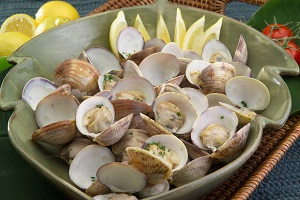|
The Calculator was developed by the following University of Florida IFAS research and extension faculty: Leslie Sturmer, Cooperative Extension Service; Dr. Shirley Baker, School of Forest Resources and Conservation; Dr. Kelly Grogan and Dr. Sherry Larkin, Food and Resource Economics Department.
Graduate students who contributed to this project include Angelo (Jason) Spadaro and Jorge Avila.
Dacing Tree, Inc. developed the web-based calculator, which was inspired by the National Tree Benefit Calculator created by Casey Trees and Davey Tree Expert Company in association with the USDA Forest Service's Center for Urban Forest Research. The nitrogen and carbon cycles were illustrated by Anna Hinkelday. Photos were provided by the FDACS Bureau of Seafood and Aquaculture Marketing, University of Florida IFAS Communications, and Eric Zamora.
Funding for this project was obtained from the Florida Department of Agriculture and Consumer Services (FDACS) through the 2014-15 Florida Aquaculture Program (contract #00094300).

References:
Burke, S. 2009. Estimating Water Quality Benefits from Shellfish Harvesting; A Case Study in Oakland Bay, Wisconsin.
Technical Memorandum. Entrix, Inc.
Newell, R.I.E., T.R. Fisher, R.R. Holyoke and J.C. Cornwell. 2005. Influence of Eastern oysters on nitrogen and phosphorus regeneration in Chesapeake Bay, USA. IN: Dame, R. and S. Olenin (Eds), The Comparative Roles of Suspension Feeders in Ecosystems. NATO Science Series IV-Earth and Environmental Sciences, Vol 47: 93-120. Springer, Netherlands.
Nielsen, A.S.E, A.J. Plantinga and R.J. Alig. 2014. New Cost Estimates for Carbon Sequestration Through Afforestation in the United States. General Technical Report PNW-GTR-888. U.S. Department of Agriculture, Forest Service, Pacific Northwest Research Station, 35 p.
|